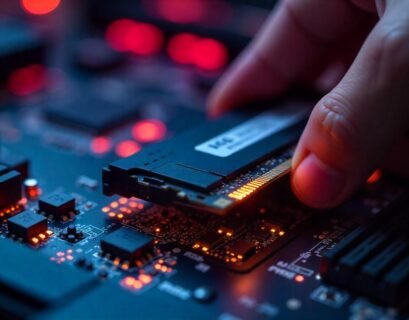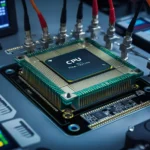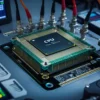Random Access Memory (RAM) is one of the critical components of modern computing systems, playing a vital role in enabling speed and performance. As technology continues to evolve, the types of RAM available, their architectures, and their functionalities have expanded significantly. In this comprehensive article, we will demystify RAM, exploring its various types, how they impact system performance, the latest industry innovations, future outlooks, and ultimately guiding you towards making informed choices regarding memory for your devices.
1. Understanding RAM: Basics and Functionality
What Is RAM?
Random Access Memory (RAM) is a type of volatile memory that temporarily stores data that the CPU needs to access quickly. Unlike storage (e.g., hard drives, SSDs), RAM does not retain data when the power is turned off. Its primary function is to provide high-speed data access for running applications and processes.
Why Is RAM Important?
The role of RAM is crucial for multitasking and efficient application performance. Higher amounts of RAM allow systems to handle larger datasets and run more applications simultaneously. For instance, gaming, video editing, or data analytics software requires significant amounts of RAM to function optimally.
2. Types of RAM: A Comparative Analysis
The RAM landscape is diverse, featuring several types designed for different applications. Below are some key types of RAM, highlighting their properties and typical uses.
2.1. Dynamic RAM (DRAM)
Description: Dynamic RAM (DRAM) is the most common type of RAM used in most computers and devices. It stores bits of information in capacitors, which need to be refreshed thousands of times per second to maintain the data.
Performance: DRAM tends to be slower compared to other types of RAM like SRAM (Static RAM). However, its density allows for larger storage capacities at lower costs.
Uses: Found in personal computers, laptops, servers, and mobile devices.
2.2. Static RAM (SRAM)
Description: Unlike DRAM, Static RAM (SRAM) retains data bits in its memory as long as power is supplied. It is faster and more reliable but also more expensive due to its complexity and lower density.
Performance: SRAM is much faster than DRAM, offering shorter access times. Its stability and speed make it suited for caching memory.
Uses: Commonly used in CPU caches, embedded systems, and other applications where speed is a critical factor.
2.3. Synchronous Dynamic RAM (SDRAM)
Description: Synchronous DRAM (SDRAM) synchronizes with the CPU’s clock speed, allowing for efficient and faster data processing and transfer.
Performance: SDRAM provides improved performance over traditional DRAM due to its synchronous operation, subsequently reducing latency.
Uses: Widely used in modern computer systems and is the basis for DDR (Double Data Rate) RAM.
2.4. DDR SDRAM
Description: Double Data Rate SDRAM (DDR SDRAM) is an evolution of SDRAM capable of transferring data twice per clock cycle, effectively doubling the memory bandwidth.
Variations: DDR has multiple generations, including DDR2, DDR3, DDR4, and DDR5, each offering improvements in speed, bandwidth, and energy efficiency.
Performance: Each successive generation of DDR improves upon latency, throughput, and power consumption.
Uses: Primarily seen in desktops, laptops, and servers.
2.5. GDDR (Graphics DDR)
Description: Graphics Double Data Rate (GDDR) is a type of RAM optimized for graphics processing units (GPUs). It is designed for high bandwidth and efficient rendering of images and video.
Performance: GDDR offers higher bandwidth compared to standard DDR, making it vital for gaming PCs and workstations where graphics rendering is critical.
Uses: Found in graphics cards and gaming consoles.
2.6. LPDDR (Low Power DDR)
Description: Low Power Double Data Rate (LPDDR) RAM is engineered for mobile devices, emphasizing reduced power usage while still providing satisfactory performance.
Performance: While LPDDR has slightly lower performance compared to its full-power DDR counterparts, the trade-off in power efficiency is invaluable for battery-powered devices.
Uses: Commonly used in smartphones, tablets, and laptops where battery life is paramount.
3. RAM and System Performance: Key Metrics
Performance impacts from RAM can be assessed using several key metrics:
3.1. Capacity
The amount of RAM in a system (measured in gigabytes, GB) directly affects performance. More RAM allows systems to handle more tasks simultaneously, minimizing delays.
3.2. Speed
Measured in megahertz (MHz), RAM speed affects how quickly data can be read from or written to memory. Faster RAM (with higher MHz ratings) can speed up applications, particularly those that are memory-intensive.
3.3. Latency
Latency describes the delay between requesting and receiving data from RAM. Lower latency is better, as it enhances the responsiveness of applications and overall system performance.
3.4. Bandwidth
RAM bandwidth indicates the maximum data transfer rate between RAM and the CPU. Higher bandwidth facilitates faster performance, particularly when multiple applications run concurrently.
4. Innovations in RAM Technology
The RAM industry is thriving, driven by the increasing demand for faster, more efficient memory solutions. Here are some recent innovations worth noting:
4.1. HBM (High Bandwidth Memory)
High Bandwidth Memory (HBM) delivers significantly higher performance compared to traditional memory types, utilizing a 3D stacking architecture. HBM’s unique design allows for faster data transfer rates and increased bandwidth while reducing power consumption.
4.2. DDR5 RAM
The launch of DDR5 RAM is a significant leap forward in the memory industry. This latest generation offers doubled bandwidth over DDR4, reducing power consumption and allowing for larger capacity modules, which is particularly beneficial for gaming, AI processing, and high-performance computing.
4.3. CXL (Compute Express Link)
CXL is a high-speed interconnect standard designed to improve memory sharing and resource utilization between CPUs and accelerator devices. This technology helps in reducing latencies and optimizing the performance of data-intensive applications.
4.4. Memory Pooling and Heterogeneous Memory Systems
Emerging concepts focused on memory pooling allow systems to utilize different types of memory (e.g., DRAM, NVMe storage) concurrently as a single memory pool. This flexibility offers enhanced performance and efficiency for today’s diverse workload environments.
5. Future Outlook of RAM
The future of RAM is poised for exciting advancements shaped by emerging technologies, user needs, and industry pressures. Here are some trends and predictions:
5.1. Increased Capacity and Speed Requirements
As software evolves, the demand for higher capacity and speed RAM will grow. Technologies like cloud computing and virtualization are driving the need for more significant memory resources to handle extensive workloads.
5.2. Energy Efficiency
With increasing awareness of environmental concerns, the RAM industry will focus on energy-efficient designs. Future RAM generations might witness a balance between performance and power consumption, addressing the sustainable computing movement.
5.3. Integration with AI and Machine Learning
As AI and machine learning applications proliferate, the requirement for high-bandwidth, low-latency memory will rise. RAM technologies that cater specifically to these computational needs will become increasingly critical.
5.4. Newer Architectures
Innovations such as non-volatile memory (NVM) and storage-class memory (SCM) are likely to reshape the RAM landscape, merging the concepts of memory and storage. This convergence can lead to improvements in system performance and efficiency.
Conclusion
Understanding RAM is crucial for anyone involved in computing, whether you are an end-user striving for better performance, a developer, or a technology enthusiast. As we have discussed, different types of RAM serve unique functions and impact system performance in diverse ways. With the ongoing innovations in this field, including faster speeds, larger capacities, and increased energy efficiency, the future of RAM looks promising.
By understanding the specifics of RAM types, performance metrics, and the latest trends, consumers and professionals alike can make informed choices in hardware decisions. As we move towards an increasingly data-driven world, RAM will continue to be a pivotal component in enhancing performance and driving new technological advancements. Embrace the evolution of RAM technology, and it will undoubtedly benefit your computing experience now and in the future.
















